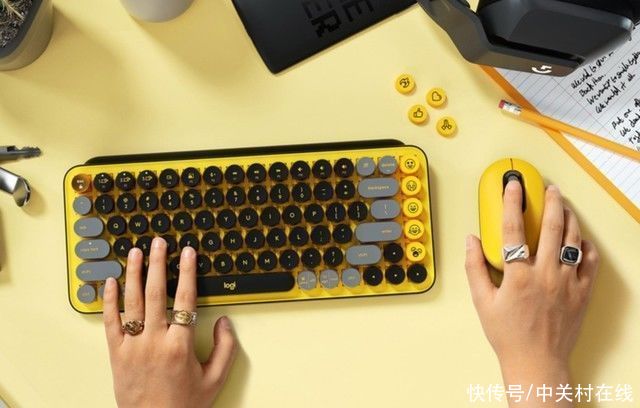е…іеұұеҲқеәҰе°ҳжңӘжҙ—пјҢзӯ–马жү¬йһӯеҶҚеҘӢ蹄пјҒиҝҷзҜҮж–Үз« дё»иҰҒи®Іиҝ°AndroidзүҲAppзҡ„жҺ§д»¶е…ғзҙ е®ҡдҪҚзӣёе…ізҡ„зҹҘиҜҶпјҢеёҢжңӣиғҪдёәдҪ жҸҗдҫӣеё®еҠ©гҖӮ
еүҚиЁҖеҰӮдҪ•иҺ·еҸ–йЎөйқўдёҠеҗ„жҺ§д»¶е…ғзҙ пјҢж— и®әжҳҜWebиҮӘеҠЁеҢ–иҝҳжҳҜAppиҮӘеҠЁеҢ–пјҢжӯӨжӯҘйӘӨйғҪжҳҜйқһеёёе…ій”®зҡ„пјҒ
WebйЎөйқўзҡ„жҺ§д»¶е…ғзҙ еҸҜйҖҡиҝҮејҖеҸ‘иҖ…йҖүйЎ№пјҲChromeжөҸи§ҲеҷЁзҡ„F12пјүжқҘеҚҸеҠ©е®ҡдҪҚпјҢAppз«Ҝд№ҹжҳҜжңүзӣёеә”зҡ„е·Ҙе…·жқҘеҚҸеҠ©е®ҡдҪҚзҡ„
uiautomatorviewerй…ҚзҪ®androidзүҲзҡ„е…ғзҙ е®ҡдҪҚдҫқиө–Android StudioйҮҢзҡ„иҮӘеёҰзҡ„е·Ҙе…·uiautomatorviewerжқҘеҚҸеҠ©е®ҡдҪҚпјӣuiautomatorviewerйҖҡиҝҮжҲӘеұҸ并
еҲҶжһҗXMLеёғеұҖж–Ү件зҡ„ж–№ејҸпјҢдёәз”ЁжҲ·жҸҗдҫӣз©әй—ҙдҝЎжҒҜжҹҘзңӢжңҚеҠЎгҖӮ
гҖҗAndroidзүҲAppзҡ„жҺ§д»¶е…ғзҙ е®ҡдҪҚгҖ‘uiautomatorviewerзҡ„е®үиЈ…и·Ҝеҫ„еңЁLibrary/Android/sdk/tools/bin/uiautomatorviewerдёӢпјҲMacзүҲжң¬пјү
з”ұдәҺжҜҸж¬ЎеҗҜеҠЁйғҪйңҖиҰҒиҝӣе…ҘLibrary/Android/sdk/tools/bin/зӣ®еҪ•жүҚиғҪеҗҜеҠЁпјҢжҳҫеҫ—еҚҒеҲҶз№Ғзҗҗпјӣеӣ жӯӨеңЁй…ҚзҪ®ж–Ү件(.bashrc)дёӯж·»еҠ дәҶдёҖжқЎaliasпјҡ
(alias uiviewer=Library/Android/sdk/tools/bin/uiautomatorviewer)пјҢеҗҺз»ӯеҸҜзӣҙжҺҘеңЁз»Ҳз«ҜдҪҝз”ЁuiviewerеҗҜеҠЁгҖӮ

ж–Үз« еӣҫзүҮ
еҸҰеӨ–пјҢйңҖиҰҒеңЁзҺҜеўғеҸҳйҮҸж–Ү件пјҲ.bash_profile)ж·»еҠ пјҡsource ~/.bashrc

ж–Үз« еӣҫзүҮ
ж·»еҠ е®Ңд№ӢеҗҺпјҢйңҖеңЁз»Ҳз«Ҝжү§иЎҢжҢҮд»Өпјҡsource ~/.bash_profileдҪҝзҺҜеўғеҸҳйҮҸз”ҹж•ҲгҖӮжҺҘзқҖеҸҜзӣҙжҺҘдҪҝз”ЁжҢҮд»ӨuiviewerеҗҜеҠЁuiautomatorviewerе·Ҙе…·гҖӮ
жҺ§д»¶е…ғзҙ е®ҡдҪҚеҗҜеҠЁе®Ңuiautomatorviewerе·Ҙе…·еҗҺпјҢиҝһжҺҘдёҠе®үеҚ“жүӢжңәпјҢ并且иҝӣе…ҘеҲ°зӣёеә”зҡ„йЎөйқўпјҢйҖҡиҝҮе·ҰдёҠи§’зҡ„жҲӘеӣҫжҢүй’®еҚіеҸҜе°ҶAppдёҠзҡ„жҺ§д»¶е…ғзҙ и§ЈжһҗеҮәжқҘ

ж–Үз« еӣҫзүҮ
зҙ§жҺҘзқҖпјҢе°ұеҸҜж №жҚ®еҗ„жҺ§д»¶зҡ„еұһжҖ§иҝӣиЎҢжҺ§д»¶е…ғзҙ зҡ„е®ҡдҪҚдәҶпјҢдёҖиҲ¬дјҳе…ҲдҪҝз”ЁIDжқҘе®ҡдҪҚгҖӮ
p.p1 { margin: 0; font: 11px Menlo; color: rgba(0, 0, 0, 1); background-color: rgba(255, 255, 255, 1) } span.s1 { font-variant-ligatures: no-common-ligatures } p.p1 { margin: 0; font: 11px Menlo; color: rgba(0, 0, 0, 1); background-color: rgba(255, 255, 255, 1) } span.s1 { font-variant-ligatures: no-common-ligatures } p.p1 { margin: 0; font: 11px Menlo; color: rgba(0, 0, 0, 1); background-color: rgba(255, 255, 255, 1) } span.s1 { font-variant-ligatures: no-common-ligatures } p.p1 { margin: 0; font: 11px Menlo; color: rgba(0, 0, 0, 1); background-color: rgba(255, 255, 255, 1) } span.s1 { font-variant-ligatures: no-common-ligatures } p.p1 { margin: 0; font: 11px Menlo; color: rgba(0, 0, 0, 1); background-color: rgba(255, 255, 255, 1) } span.s1 { font-variant-ligatures: no-common-ligatures } p.p1 { margin: 0; font: 11px Menlo; color: rgba(0, 0, 0, 1); background-color: rgba(255, 255, 255, 1) } span.s1 { font-variant-ligatures: no-common-ligatures } p.p1 { margin: 0; font: 11px Menlo; color: rgba(0, 0, 0, 1); background-color: rgba(255, 255, 255, 1) } span.s1 { font-variant-ligatures: no-common-ligatures }
жҺЁиҚҗйҳ…иҜ»
- д»ҘCSDN app дёәдҫӢ иҪҜ件е·ҘзЁӢ жЎҲдҫӢеҲҶжһҗ
- е“Ҳйұјзҹҝе·ҘзЁӢеәҸAPPејҖеҸ‘
- Android Activityд№Ӣй—ҙзҡ„и·іиҪ¬
- FlappyBirdWebзҙ жқҗиө„жәҗ
- е®үеҚ“зҡ„еҸ‘еұ•еҺҶзЁӢ
- жҒӢзҲұиҜқжңҜеә“appпјҢ
- Android зҹӯи§Ҷйў‘SDK
- д»Җд№Ҳе®үеҚ“жүӢжңәжҠ•еұҸиҪҜ件жңҖеҘҪпјҲпјү
- Androidдә‘з«ҜAPP















